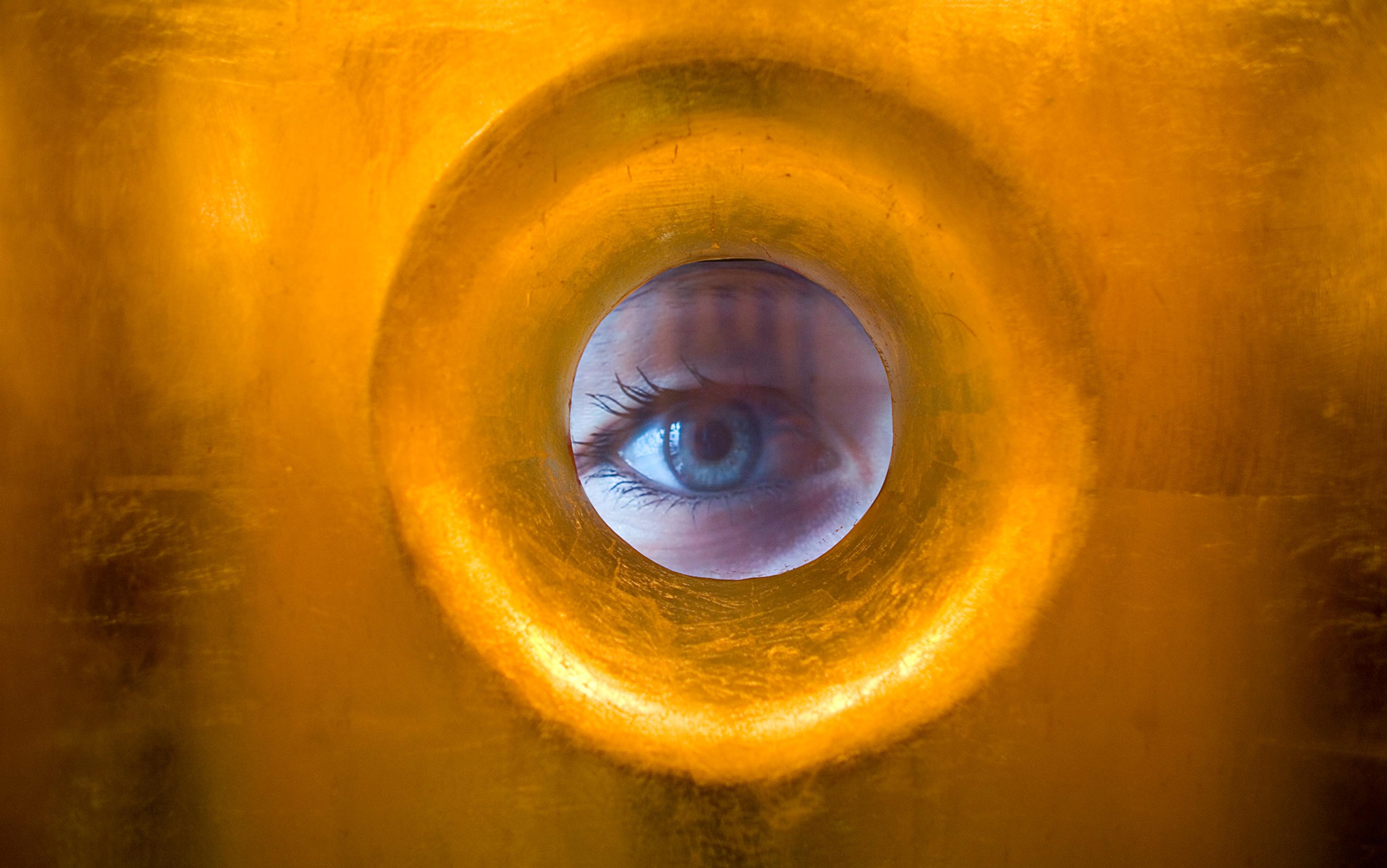How could gaining knowledge amount to anything other than discovering what was already there? How could the truth of a statement or a theory be anything but its correspondence to facts that were fixed before we started investigating them?
Some philosophers have argued that, despite widespread intuitions to the contrary, knowledge is not merely a matter of representation but also of construction, and that truth cannot be completely detached from human needs and interests. John Dewey, for example, argued that the object of knowledge is the product of enquiry and not something that exists independently of that enquiry. But this can’t be right. After all, scientists discovered DNA, distant planets and gravity, they did not create them. Facts are facts. Any other view seems disastrous, from the vague assertion that we all create our own truth to the Nietzschean claim that it’s interpretations all the way down. Without a shared target that we all aim at getting right, rational discussion is no longer possible. So what were these philosophers getting at, exactly?
The realist view, which sees enquiry as a process of revelation and knowledge as a representation of antecedent facts, is intuitively compelling. Think of a murder investigation. To be sure, the investigators might need a creative imagination in thinking about possible solutions and ways of looking for evidence, but their knowledge of the killer’s identity does not involve any creation on their part. On the contrary: someone killed the victim, and nothing that the investigators do during their inquiries could alter that fact. Knowledge consists in having the right beliefs about that fact, based on the right evidence.
These kinds of examples are useful for philosophers: they are simple, familiar and they generate powerful intuitions. But, precisely because of their simplicity, they can be misleading. Not all enquiries are like whodunnit investigations. In fact, if we want to know what knowledge is, we should also look at more complex cases, in which the object of investigation itself is articulated only as enquiry progresses. Depending on the type of enquiry we examine, we might find that it is more appropriate to talk of articulation than representation, creation rather than revelation.
Some enquiries are indeed like whodunnits. We start with specific questions, and these questions come with predetermined sets of possible answers. Our goal is to land on the correct answer. Sometimes – hopefully, more often than not – we succeed; but nothing we actually do during our investigation determines what the correct answer is. This is the tragedy of the judicial system. Innocent lives are ruined while the real culprits get away with murder. Some cold cases remain cold forever, and the truth is buried with the corpse. To a certain extent, many of our scientific enquiries could be understood in this way. Consider the following question: how has Earth’s average surface temperature changed over the past million years? With the help of complex inferences and models based on what we know of today’s temperatures and paleontological data, scientists can reach some estimates. But scientists might be wrong, and the further back in the past we go, the more difficult it is to get precise estimates. Yet, Earth’s surface did have an average temperature exactly 1 million years ago, just like it has an average temperature today. If we could travel back in time and bring our meteorological stations with us, we would be able to measure the temperature at different points on Earth and calculate this average.
Notice that the enquiries I have just described both operate within a familiar domain. The definite questions, with their space of possible answers, presuppose an object of investigation that is already well defined. The correct solution to a murder case might be surprising, but it’s nothing that a clever novelist could not imagine. Scientists can enquire into the temperature on Earth over the past million years because others before them have developed the conceptual, theoretical and instrumental tools that allow us to understand and measure temperature and study its effects on a host of natural phenomena. Precisely for this reason, we should not assume that all enquiries are like this. Instead, we should turn our attention to the enquiries that create that familiarity in the first place.
There was a time when we did not know what temperature was nor how to measure it. As Hasok Chang recounts in Inventing Temperature (2004), scientists started their investigations with a vague sense of temperature as a phenomenon related to our sensations of hot and cold as well as various natural phenomena, such as the expansion and contraction of solids and liquids. They noticed that doors are more difficult to open in the summer heat, and water levels in pots steadily rise when brought to a boil. From this rudimentary starting point, they worked their way towards sophisticated measuring instruments, the conceptual distinction between temperature and heat, all the way to thermodynamics and the kinetic theory of gases. Although their enquiries were guided by various aims – establishing the fixed points of thermometry, relating the abstract concept of absolute temperature to concrete measurements – those enquiries were nothing like ‘whodunnit’ investigations. Scientists did not know exactly what they were looking for, and their target evolved along with their enquiry. Their work was chiefly creative, because they made the tools that served to delineate the very object of their enquiry. Retrospectively, we can understand what they were doing as getting closer to what we now understand with the help of our more sophisticated tools. But their enquiry was open ended, with each step building on previous steps in an iterative process.
Once the framework is settled, it delimits the questions we can ask and the range of their possible answers
The kind of knowledge or understanding that is gained through this enquiry cannot be captured by the idea of representation alone. In Science, Truth, and Democracy (2001), Philip Kitcher proposes the image of the sculptor making a statue: while relying on the materiality of the marble block, the sculptor does not stumble upon a hidden treasure patiently waiting to be discovered. In Articulating the World (2015), Joseph Rouse proposes to replace the notion of representation with that of articulation. Science creates new patterns of reasoning and interaction with our surroundings. In doing so, it transforms puzzling phenomena into intelligible objects of discourse and action. Although most of us do not have a technical understanding of temperature and heat, we are now surrounded with devices that embody this knowledge – thermometers, refrigerators, microwaves.
What distinguishes these types of enquiries, and what accounts for their differences? In addressing these questions, I follow the insights of Rudolph Carnap (Logical Foundations of Probability, 1950) and of Thomas Kuhn (The Structure of Scientific Revolutions, 1962), who both emphasised the role of frameworks or paradigms in our cognitive lives. Frameworks can be understood as constellations of concepts, methods and assumptions that reflect our understanding of the world around us and regulate how we think and act. The whodunnit-style investigations can be likened to what Carnap termed ‘internal questions’ – I prefer to call them ‘framed enquiries’. Their defining feature is that they rely on settled frameworks that constrain the enquiry from question to answer, from problem to solution. In asking what the surface temperature of Earth was a million years ago, scientists presuppose (among other things) the complex theoretical and instrumental apparatus that defines temperature as a quantifiable physical property. Similarly, the question ‘Who killed Ratchett on the Orient Express?’ presupposes established concepts that distinguish between different kinds of events and actions. Our folk categories, along with their more sophisticated legal counterparts, determine what counts as suicide, murder, manslaughter, life and death, how they relate to one another, and how to differentiate between them in practice.
Once the framework is settled, it delimits the questions we can ask and the range of their possible answers, although the correct answer itself is not up to us. To express this feature, Kuhn likened the research done under an established paradigm to a kind of ‘puzzle-solving’, where the structure of the problem itself allows for only one predetermined solution. We can say that there is a fact of the matter about the surface temperature of Earth a million years ago because, given our current concept of temperature and measurement methods, this question has a determinate correct answer, although scientists will probably never get more than rough and uncertain estimates.
By contrast, in what we may term ‘framing enquiries’, which include what Carnap called ‘external questions’, the framework itself is at stake. The issue is not just what to think about things, but how to think about them. Such enquiries are concerned with the creation, revision or expansion of our frameworks. In their most radical instances, they lead to what Kuhn called ‘paradigm shifts’, as when physics moved from the Newtonian paradigm of absolute space and time to Einstein’s relativistic paradigm. While these enquiries also rely on concepts, methods and assumptions – as all enquiries do – they involve the continuous revision of existing frameworks or the creation of new ones as they progress. Consequently, these enquiries are open-ended and creative in a more fundamental sense. The product itself, not just the way of getting there, involves creation.
The distinction between framed and framing enquiries can be illuminated by an analogy with legal judgements. The law characterises certain kinds of acts as different types of offences and delineates the types of consequences that ensue. In most cases, the existing legal categories can be applied to the case at hand. However, judges are sometimes faced with situations that do not fit the existing categories. With the development of new technologies, these situations are happening more and more often. Lawmakers must redefine ‘property’ and ‘theft’ in the digital age. The already complex issue of determining responsibility is further challenged by the advent of self-driving cars and the use of artificial intelligence in decision-making. Framing enquiries are analogous to court trials where past judgements (in common law) or written laws (in civil law) underdetermine how these novel phenomena should be interpreted and adjudicated. In these instances, judges or lawmakers need to make creative decisions that will not only settle the present case, but also constrain how future similar situations will be judged.
Why is this distinction significant? For one, it shows that simple cases of framed enquiry cannot serve as the sole paradigm for knowledge acquisition. One of the defining characteristics of framed enquiries is that they occur in familiar domains, where we possess the tools required to ask and answer questions about certain objects or phenomena. They are like filling in the blanks on an already well-drawn map. We have the big picture, but we are missing a few mountain paths. How could we make legitimate generalisations about knowledge acquisition based on how enquiry works in the cases in which we already know so much? If we want to understand how we, as cognitively limited beings, manage to gain knowledge of the world we live in, we should examine framing enquiries – enquiries that chart new territories or alter our overall understanding of a subject matter.
Facts don’t change minds because, most often, it’s the framework through which we analyse them that is at stake
But this does not just matter for philosophers and their theories of knowledge, or for scientists and their understanding of their research. This distinction also impacts how we navigate our own daily enquiries, including in the social and political domain.
Many debates labour in unproductive arguments when it is wrongly assumed that participants share the same framework. In most social and political disagreements, the frameworks through which we analyse things and evaluate decisions – our conception of justice, equality, efficiency – are almost always at stake. If you are debating whether this or that country is a democracy, or whether trans women are women, chances are you are not relying on the same framework but rather debating about the framework itself. Take the assessment of COVID-19-related policies. We can only reduce the disagreement about the efficiency of lockdowns or vaccine mandates to a debate about facts or data once we already agree on all the essentials: what ‘efficiency’ means from a medical, social, political and economic perspective; how individual freedoms are to be balanced with society-wide benefits; how actual and preventable COVID-19 deaths are calculated; and many other parameters. But settling on a shared framework is the hard part. This is one of the reasons (although arguably, only one of many) why facts do not change minds because, most often, it is the framework through which we analyse them that is at stake.
It is, then, crucial to know when we are in a framed or in a framing enquiry, debate or conversation. The issue is not merely one of potential miscommunication, but also of misdirected argumentation. I have noted earlier that, in framed enquiry, the framework constrains the space of possible answers, while in framing enquiry, the issue is more open-ended. We do not aim at a predetermined target in the same way that a murder investigation aims at finding out who the murderer is. When we discuss our conceptions of democracy, gender, efficiency, the goal is to build conceptual structures that help us make sense of the world, given our purposes. There is no right answer to be found ‘out there’, whether in the Platonic essence of democracy or a metaphysical ‘eternal feminine’. Carnap expresses this idea by claiming that external questions are primarily practical questions. By this, he means that their answers are not provided directly by the world, but rather they are partially determined by our needs, purposes and interests. This is because, for Carnap, frameworks are instruments or tools, not simply mirrors of the world. This is perhaps more intuitive for social concepts, like gender or democracy, but even scientific frameworks are interest-dependent in some sense. Take the astronomical nomenclature that distinguishes between planets and asteroids. Is there really a shared essence between the gas giants Jupiter and Saturn and the comparatively small rock Mercury that excludes the smaller rocks Pluto and Eris? More likely, different theoretical interests – calculating orbits, explaining the formation of the solar system – are likely to yield slightly different verdicts. Even the way data is collected (for example, how COVID-19 deaths are reported and calculated) involves choices that partly reflect our values and interests, whether practical or theoretical. In William James’s words: ‘The trail of the human serpent is thus over everything.’
This is not to say that, when we engage in framing enquiry, we should give up on any ideal of objectivity. The open-endedness of framing enquiry does not amount to a free-for-all pass to choose or create the framework that fits one’s prior beliefs and desires. In fact, doing so would be the opposite of open-endedness, since it would subordinate the entire enquiry to predetermined ends. Instead, facts matter in framing enquiry because there is a constant iterative adjustment between frameworks and facts. The ideal is less one of correspondence to independent reality as one of pragmatic coherence or reflective equilibrium between means and ends, facts and values. For example, a health-first view of efficiency that looks at COVID-19 deaths but not suicides and mental health consequences lacks coherence. Reasons, arguments and evidence still have a central role to play in framing enquiry.
In a similar vein, saying that conceptual frameworks determine the space of possible answers does not mean that we can create our own truth, or change the facts themselves just by adopting a new framework. To take our earlier example, it might be that, according to one conception of ‘efficacy’ that is geared towards short-term economic loss, lockdowns were not effective, while according to another conception of ‘efficacy’ geared towards limiting the spread of COVID-19, lockdowns were effective. In that case, we are not faced with two sets of ‘alternative facts’. Both frameworks can accommodate the same facts. We cannot pick and choose the framework we want, with the parameters we want, to change the facts themselves. What we can do is have legitimate debates about what conception of efficacy is more useful – what aspects of human life matter to us, and what kind of framework will help us make better decisions in the future.
We debate as if the world itself could settle who is right or wrong, even in the sociopolitical domain
This is why it is important to know when we are engaged in a framed or a framing enquiry. Unfortunately, it is not always straightforward to tell, especially from the inside. First, the distinction between framed and framing enquiry is a spectrum rather than a dichotomy, and that complicates matters. Many of our daily investigations are very clearly on the framed end of the spectrum: why is the kitchen sink leaking? How many eggs do we have in the fridge? But in more complex enquiries, whether in science or politics, the boundaries between framed and framing enquiry are blurred, as we most often alternate between the two. There can be framing moments in a mostly framed enquiry, as when we decide which analysis to perform in a statistical study. Sometimes, we have to wait until the end of our enquiry to find out whether it was a framed or framing enquiry. We might think that we are dealing with a familiar kind of problem, only to discover that we need to reconfigure our approach as we go along.
Second, we might be oblivious to the difference between framed and framing enquiry because we are oblivious to the presence of frameworks themselves. Frameworks are crystallisations of our understanding of the world, and they remain transparent most of the time. We see through them instead of looking at them. We rarely examine them until they break down. Even then, we tend to believe that the words we use and the methods we learned are transparent ways of describing reality. We hold on to our deep-seated intuition that all of our enquiries are like Hercule Poirot mysteries. We debate as if the world itself could settle who is right or wrong, even in the sociopolitical domain.
What we can do, regardless of our degree of awareness for the particular situation we are in, is never to take our frameworks for granted. As Dewey puts it:
Failure to examine the conceptual structures and frames of reference which are unconsciously implicated in even the seemingly most innocent factual inquiries is the greatest single defect that can be found in any field of inquiry.
We should always keep in mind that, looking back, frameworks are the results of a long process of trial and error, and, looking forward, most of them will need to be adjusted in light of changing circumstances and new discoveries.






